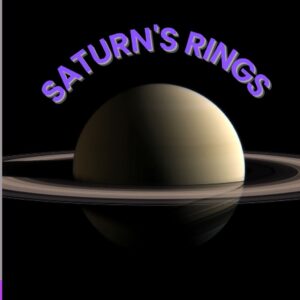This site contains affiliate links to products. I may receive a commission for purchases made through these links.
As an avid stargazer, I’ve spent countless nights exploring the cosmos through the lens of popular astronomy software. These cutting-edge programs offer a wealth of advanced features that can transform your backyard astronomy experience into a deep space expedition. From real-time sky simulations to detailed celestial object databases, the capabilities of these tools are truly out of this world.
Yet, it’s not always easy to navigate these features. That’s where I come in. With years of experience under my belt, I’ll guide you through the most advanced functionalities of these software. Whether you’re a seasoned astronomer or a curious beginner, you’ll find these insights invaluable in your cosmic journey.
Overview of Popular Astronomy Software
Before we tackle the intricacies of advanced features, it’s crucial that we develop an understanding of the popular software available to us. The digital sky can be your playground if you’re equipped with the right tools.
Stellarium is a free open-source software that allows its users to gaze at a realistic sky in 3D. Simply input your location and this robust application will render the stars, planets, and galaxies based on your coordinates.
On a different front, we have Star Walk 2, an augmented reality star chart that turns your smartphone into a personal planetarium. It eliminates the need for a physical telescope by bringing the celestial bodies right to your fingertips.
For professional astronomers, Redshift Pro is a highly regarded suite software offering 3D flight into outer space, animations of celestial events, and HD quality sky maps.
Let’s not forget about SkySafari, an app that provides details about every star, planet, and constellation you might want to explore. You’ll love its comprehensive database and its easy-to-use interface.
Let’s do a quick rundown of their features:
| Software | Features |
|---|---|
| Stellarium | 3D sky view, customizable location, rich database |
| Star Walk 2 | Augmented reality, personal planetarium, mobile-friendly |
| Redshift Pro | 3D space flight, celestial event animations, HD sky maps |
| SkySafari | Detailed information, comprehensive database, easy-to-use |
Going forward, we’ll delve deeper into what these popular astronomy software programs have to offer, especially when it comes to their advanced features. But remember, whether you’re a seasoned pro or a novice stargazer, these tools are designed to take your cosmic journey to the next level. It’s all about finding the one that suits your needs the best.
Real-time Sky Simulations
When it comes to choosing the right astronomy software, real-time sky simulations are an essential feature to consider. This unique functionality allows you to view a vivid representation of the cosmos as it is happening – not just based on historical data, but the actual, current positioning of celestial bodies.
Among the top software, Stellarium is particularly remarkable for ensuring an immersive real-time experience. By leveraging advanced graphics options, I’ve found that it delivers stunningly realistic night sky simulations on my screen. It comes with over 600,000 stars in its default catalog, but if you’re an astronomy savvy like me who indulges in an in-depth exploration, you can extend this pack to include up to 177 million stars!
Star Walk 2 is another game-changer in this realm. That it stands out to me is because of its comprehensive AR (Augmented Reality) mode. This feature beautifully integrates the digital universe with my surrounding environment. So, when I scan the sky with my device’s camera, it conveniently overlays information about stars, planets, and constellations, adding an extra layer of immersion to my cosmic journey.
On the other hand, Redshift Pro provides one of the most detailed real-time sky simulations. With this powerful tool, your screen turns into a high-end telescope that reveals stunning details. My verdict comes from experiencing its visualizations of nebulae, dwarf planets, and the Milky Way galaxy. Moreover, Redshift Pro’s animation – viewing the night sky in motion – has always been a breathtaking spectacle.
Lastly, SkySafari doesn’t fail to impress me either. It’s blessed with high-precision graphics that are so immersive, they sometimes make me feel like an astronaut traversing the universe!
It’s important to remember that each software caters to various user needs. So, exploring real-time sky simulations on different platforms will let you truly experience their unique capabilities. As you familiarize yourself with these immersive experiences, you may find it easier to decide which software ultimately captures your heart and mind.
Okay, now that we’ve nailed down the aspect of real-time sky simulations, let’s move on to exploring other advanced features that these astronomy softwares offer…
Deep Space Exploration Tools
Diving deeper into these software programs, it’s time to talk about the truly advanced features they offer. Beyond just mapping the stars, their deep space exploration tools provide new perspectives on distant celestial bodies and galaxies.
One of the most impressive features is 3D space travel. In Stellarium, for instance, you’re not just looking at a flat projection of the sky. You can actually travel through space, visiting any of the planets, stars, and even distant galaxies. Isn’t that fascinating?
Alongside Stellarium, popular astronomy software like Redshift Pro and SkySafari have advanced tools for deep space exploration too. They offer numerous options to view the universe in detail. You can “land” on other planets, see the constellation lines and images, and get more information about any object just by clicking on it.
Augmented Reality (AR) is another exciting feature. Star Walk 2 conquers the AR territory by projecting data about celestial bodies into your real-life environment. Imagine, stargazing without leaving your garden or bedroom!
Moreover, these cutting-edge astronomical software are equipped with extensive databases. They provide plenty of detailed information about solar systems, stars, galaxies, nebulae, dwarf star systems, and other celestial bodies. For instance, Redshift Pro features an impressive catalogue of over one million stars, planets, and galaxies.
Here are some data features Stellarium, Star Walk 2, SkySafari, and Redshift offer:
| Software | Number of Celestial Bodies | AR Features | 3D Space Travel |
|---|---|---|---|
| Stellarium | 600,000+ stars | No | Yes |
| Star Walk 2 | Not disclosed | Yes | No |
| SkySafari | Not disclosed | No | Yes |
| Redshift Pro | 1,000,000+ | No | Yes |
The future of stargazing is now and it’s digital. As you dive deep into the immersive world of advanced features in these astronomy software, remember my advice – take your time, explore, and find the one that perfectly suits your stargazing needs. It’s a cosmic journey worth undertaking.
Advanced Celestial Object Databases
When it comes to astronomy software, the size and complexity of the celestial object databases they offer can make all the difference in your stargazing experience. Stellarium, Redshift Pro, Star Walk 2, and SkySafari are perfect examples of software with such advanced features.
Stellarium, for example, boasts not only a database of over 600,000 stars but also takes into account the user’s location on earth. This process, known as geocoding, offers is an impressive feature. It allows you to see exactly what stars and constellations are available in your specific location. It’s the real deal when it comes to bringing the night sky to your living room.
Meanwhile, Redshift Pro offers an extensive interactive 3D database of nearly 100,000 stars, planets, moons, asteroids, galaxies, and space probes. As a user, you can easily navigate through the universe, explore celestial bodies in great detail.
Let’s not forget about Star Walk 2. Its unique AR (Augmented Reality) feature enables users to hold their device towards the sky and see a real-time, 3D map of the sky, including stars, planets, constellations, and more.
Similarly, SkySafari offers an extensive database that consists of every known moon, planet, asteroid, comet, star, galaxy, nebula, and solar system. In addition, SkySafari’s database includes detailed information about each celestial object, as seen in the table below:
| Software | Celestial Objects Count |
|---|---|
| Stellarium | 600,000+ |
| Redshift Pro | 100,000+ |
| Star Walk 2 | Real-time 3D map |
| SkySafari | Every known celestial object |
In the era of advanced technology, the sky’s the limit when it comes to exploring the universe. Through these powerful tools, amateur and professional astronomers alike can journey through the cosmos right from their devices. Selecting the right software for you depends on what you’re looking for in your stargazing experience.
Image Processing and Analysis
Image processing and analysis is a key feature of these top-end astronomy software. It’s one aspect that directly impacts an astronomer’s experience, really raising these programs above the rest.
Stellarium offers real-time image processing. This means it takes into account atmospheric conditions and light pollution when rendering the night sky. So, even if I’m observing from a city center, I’ll get a sense of what it’d look like in perfect viewing conditions.
Moving forward we’ve got Redshift Pro, renowned for its advanced image analysis. It holds the power to zoom in on any celestial object from its extensive database, showing you fine details of distant galaxies. Imagine experiencing the swirls in a distant nebula or identification of far-off celestial bodies, all from your backyard.
Next, Star Walk 2 stands out with its signature function: augmented reality (AR). The app uses AR to overlay constellations, planets, and deep space objects over the actual night sky. This mix of real-world and digital content delivers an immersive stargazing experience.
Lastly, SkySafari combines image processing and analysis in a powerful way. You can simulate the night sky from any location on earth or in the solar system. This lets you experience the universe from different perspectives, each time offering you a unique sky view.
Let’s consider the stats, expressed in the table below that highlights the key differences between the solutions.
| Software | Image Processing | Interactive 3D Graphics |
|---|---|---|
| Stellarium | Yes | No |
| Redshift Pro | Yes | Yes |
| Star Walk 2 | Yes | Yes (AR) |
| SkySafari | Yes | Yes |
Undeniably, with image processing and analyzing features, these software have helped democratize astronomy and space exploration. The developers have made sure that space isn’t just for telescopes and space agencies, but for everyone with a sense of wonder for the universe. As we move forward in our digital age, these features continue to evolve, bringing space exploration closer to novices and enthusiasts alike.
Conclusion
So there you have it. Advanced features in popular astronomy software like Stellarium, Redshift Pro, Star Walk 2, and SkySafari are truly revolutionizing our understanding and exploration of the cosmos. With capabilities like 3D space travel, augmented reality, and sophisticated image processing, these tools are making deep space exploration accessible to everyone. Whether you’re a seasoned astronomer or a starry-eyed novice, there’s no denying the power and potential these software hold. They’ve not only democratized astronomy but also opened up a universe of possibilities. The stars aren’t just for scientists anymore. They’re for all of us to explore and enjoy. Keep looking up and let these software guide your journey among the stars.
What is the article about?
The article discusses popular astronomy software and their advanced features focusing on deep space exploration, including Stellarium, Redshift Pro, Star Walk 2, and SkySafari. These programs offer features such as 3D space travel, augmented reality, and extensive celestial body databases.
What are some features of Stellarium and Redshift Pro?
Stellarium offers real-time image processing that considers atmospheric conditions and light pollution. Redshift Pro lets users zoom into celestial objects to view granular details.
What does Star Walk 2 and SkySafari offer?
Star Walk 2 uses augmented reality to overlay constellations and deep space objects on the actual night sky, providing a unique exploration experience. SkySafari simulates the night sky from various locations and perspectives.
How have these software impacted astronomy and space exploration?
These software have helped democratize astronomy and space exploration by making it accessible to both novices and enthusiasts. They allow users to explore and understand the universe in innovative ways, from the comfort of their homes.




